There’s no way that anyone in my area hasn’t noticed all of the rain we’ve had lately, but it wasn’t until I was returning home from work one night to discover the steps to and my porch covered in a carpet of wriggling, desperate, earthworms seeking refuge from the water, that I realized just how much rain my community has received in the last few weeks. I have often seen worms working their way across a sidewalk or driveway, hoping for drier earth on the other side, and I usually pick them up and give them a ride to higher ground (I got quite a reputation for that practice when I was in college, where I was observed carting worms around quite often). But I have never before seen them trying to climb the steps to the porch. I have four, higher than average steps leading up to my porch. I was initially quite surprised, then being the odd duck that I am, I pointed them out to my partner, and said, “Step around the poor things. They’ve worked so hard to get where they are.” Then, of course, I became intrigued. How were they climbing up the vertical side of the steps, and even more impressive, how did they manage to navigate the overhanging lip on some of the steps? Truly, if it hadn’t been so late, and I hadn’t been so tired, I would have sat down right where I was and watched them to discover the answers to my questions. But my partner, a picture of patience, is also the sensible one in the relationship, and herded me off to bed for a few hours of sleep. I’ve been wondering about those worms ever since…
What’s even better than wondering? Finding a way to get the answer, of course! And what better way is there to do that, than to plan a program and activity to try to get an answer?
I am planning to do at least a couple of programs about rain and how varying amounts of it affect the environment. We will also learn about the aquifer that provides our drinking water, and how all that water got so far below the surface, as well as why it is so pure coming straight from the ground.
For one activity, I will use 2 liter drinking bottles cut in half length-ways, containing various different materials to represent the ground covered with grass and plant life, plant debris, sand, gravel, and bare soil. The bottles will be tilted with the neck lower than the bottom of the bottle. The neck of the bottle will be covered with a coffee filter, firmly secured with a rubber band. As water is poured into the cut open area of the bottles, it will pass through the materials and out the neck opening. Participants will be able to see how much sediment is carried by the water when there are and are not plants thriving in the soil. They will also learn how plants will not only hold soil in place, but slow down the water, so that it doesn’t flow so fast that it carries away precious top soil. Using measuring cups to capture the water draining from the bottles, and stop watches to time the flow of the water, we will be able to learn how different sediments in the soil and on the ground affect erosion.
We’re also going to create a water filtration experiment, using another drink bottle. I’ll cut across the bottle about 1/3 from the bottom. Turning the top of the bottle upside down, we will place a coffee filter around the neck and secure it with rubber bands. Cotton balls will be stuffed into the neck of the bottle. Sand will be poured in next, followed by gravel, small stones, then larger stones. I’ll have some very dirty water on hand for this activity. We will pour the dirty water into the top of the filter, and watch to see what happens. If I can get enough 2 liter bottles, we may experiment with different variations of the filter and a variety of possible filtration materials.
The filtration experiment will help children understand how the water we drink has become so clean, over millennia of natural filtration as it has worked its way through countless layers of the Earth’s crust on its way to the aquifers from which we get our tap water. I will use a paper model of a karst system to help show and explain how the water slowly seeps down into huge pools deep under the surface of the Earth.
This model is freely available here from the National Park Service.
Oh, yeah, in case you’re wondering, I haven’t forgotten about the worms. I’m planning to have a “What are earthworms really like” program, with earthworms and night crawlers as our special guests. That will provide the opportunity for kids to learn what worms do for the environment and our gardens, the vital role they play in the ecosystem and food chain, do experiments to learn just how strong they are relative to their size, and to play games that let them try out life as an earthworm. I can’t wait! This is going to be so much fun…

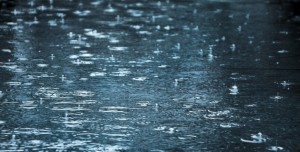
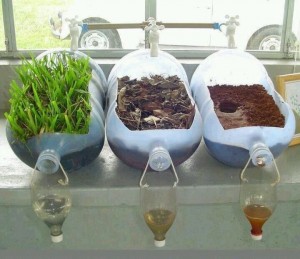
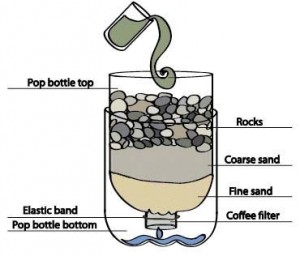
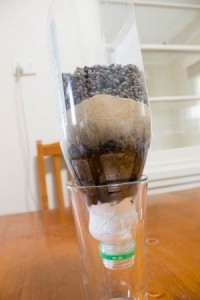
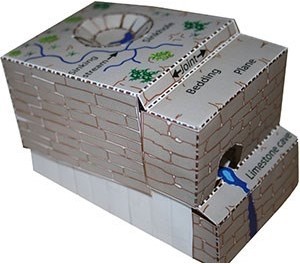



Hi Luna… this is amazing. When I was a kid, I frequently was outside following a heavy rain engaging in a “save the worms! compaign.” In fact, i recently stopped in the parking lot at work to help one of the biggest night crawlers I’ve ever seen get safely off the pavement!
I love your experiments as well. We did similar things in the Soils, Mud, and Plants MiniCamp I help yesterday and today. Details coming… 🙂